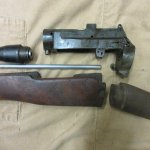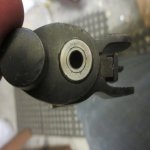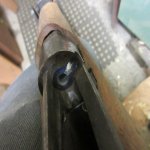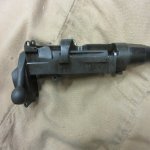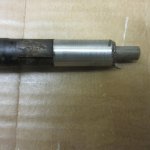Given that a No. 7 .22 barrel is just about impossible to find, lining a .303 barrel is an option.
Liners are generally 5/16" in diameter. The .303 bore is no problem, the chamber is. The .303 chamber must be filled. Here is one way to do it.
A scrap .32RF barrel was used as material. It was turned to duplicate a .303 cartridge, and fitted to the chamber. It will be bonded in place with epoxy. Seating the insert to full depth requires gentle persuasion with a hammer. The fit is close. Tried the insert in a different barrel, and more fitting would have been required.
The liner drill is then run through, cleaning out the old rifling, and sizing the bore from end to end for the liner. This particular barrel has a bore that would grade "sewer pipe". Not much use as a .303 barrel.
Note the cylindrical portion just to the rear of the cartridge shaped part. This will project from the .303 breech face, bringing the .22 barrel breech back to the bolt face, eliminating the gap where the .303 rim would have sat.
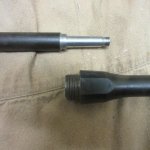
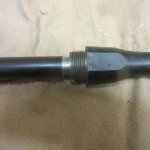
Liners are generally 5/16" in diameter. The .303 bore is no problem, the chamber is. The .303 chamber must be filled. Here is one way to do it.
A scrap .32RF barrel was used as material. It was turned to duplicate a .303 cartridge, and fitted to the chamber. It will be bonded in place with epoxy. Seating the insert to full depth requires gentle persuasion with a hammer. The fit is close. Tried the insert in a different barrel, and more fitting would have been required.
The liner drill is then run through, cleaning out the old rifling, and sizing the bore from end to end for the liner. This particular barrel has a bore that would grade "sewer pipe". Not much use as a .303 barrel.
Note the cylindrical portion just to the rear of the cartridge shaped part. This will project from the .303 breech face, bringing the .22 barrel breech back to the bolt face, eliminating the gap where the .303 rim would have sat.



















































